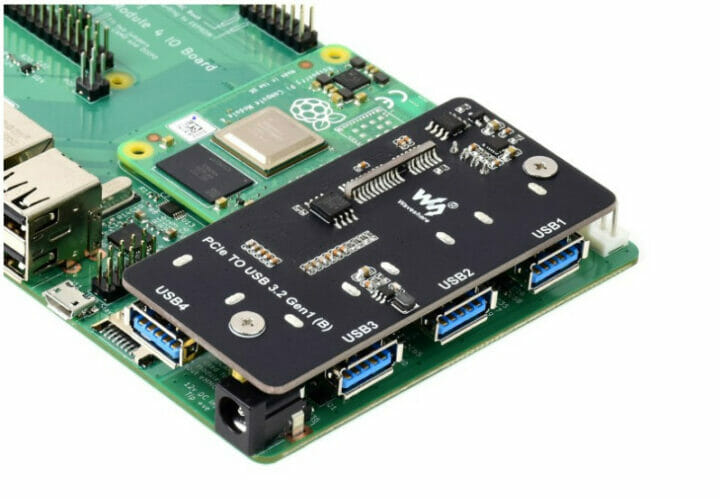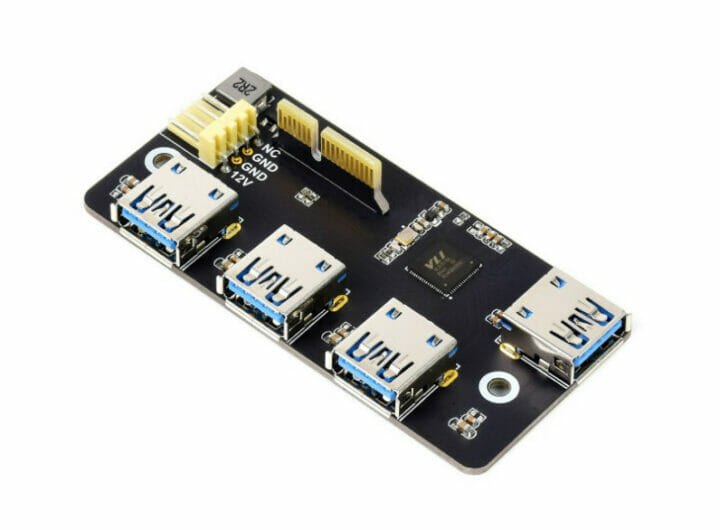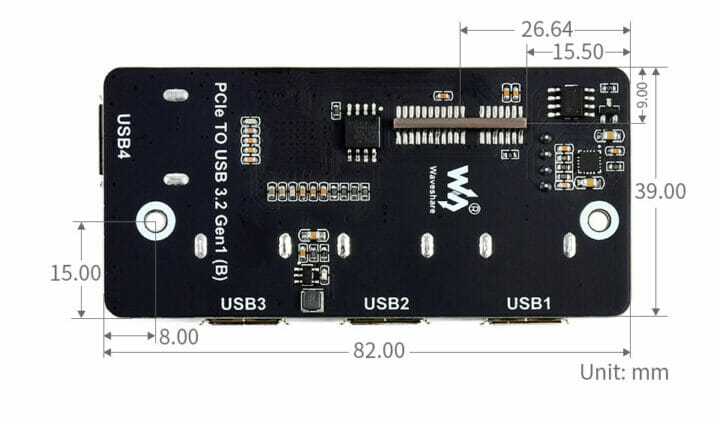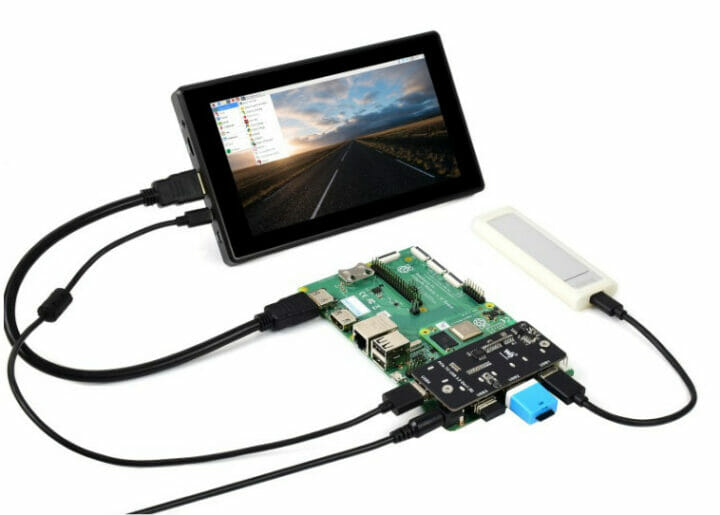Waveshare has introduced a non-standard PCIe adapter that adds four USB 3.2 ports to the Raspberry Pi Compute Module 4 IO carrier board in a way that does not take too much height.
It’s non-standard as it can not be inserted directly into a typical computer PCIe slot, and Waveshare recommends a PCIe extension cable to connect it to a motherboard. Having said that It looks much better on the IO board.
 Waveshare USB PCIe adapter features:
Waveshare USB PCIe adapter features:
- PCIe host interface
- 4x USB 3.2 Gen1 ports, USB 3.0 / 2.0 / 1.1 compatible
- Onboard VIA Labs VL805 chip as found on Raspberry Pi 4 SBC
- Power supply – 12V via PCIe connector or 4-pin header
- Designed for Raspberry Pi Compute Module 4 IO Board
- Dimensions – 82×39 mm

 Since it’s basically using the same design as Raspberry Pi 4 providing USB ports through the same VL805 PCIe chip, there’s no additional software or driver required for the board to work. But then this brings the question if VL805 supports four USB 3.0 ports, why does the Raspberry Pi 4 come with two USB 3.0 and two USB 2.0 ports? It apparently comes down to size and interference, although power requirements may have also come into play:
Since it’s basically using the same design as Raspberry Pi 4 providing USB ports through the same VL805 PCIe chip, there’s no additional software or driver required for the board to work. But then this brings the question if VL805 supports four USB 3.0 ports, why does the Raspberry Pi 4 come with two USB 3.0 and two USB 2.0 ports? It apparently comes down to size and interference, although power requirements may have also come into play:
The newly announced Pi4 does have USB3 hardware, but the reason it has only 2 USB3 rather than 4 was described as wiring limitations on the PCB. USB2 ports only need two data lines in addition to two power lines, whereas USB3 needs six data lines in addition to power and it didn’t fit in the existing form factor. With the 10x higher frequencies used, I am sure the the line length matching and impedance on USB3 signal lines is more critical as well, and potential RFI/EMC issues. Not everyone would be happy with more USB3 ports if it means your wifi doesn’t work anymore.
As the Raspberry Pi CM4 IO board only comes with two USB 2.0 ports, this adapter solves two “issues”: USB 3.2 Gen 1 ports for faster transfers, and an increase in the number of USB ports to six which should meet the requirements of most people. The PCIe to USB 3.2 adapter is sold for around $20 on Amazon, Aliexpress, and other sites.
Via Sahaj Sarup

Jean-Luc started CNX Software in 2010 as a part-time endeavor, before quitting his job as a software engineering manager, and starting to write daily news, and reviews full time later in 2011.
Support CNX Software! Donate via cryptocurrencies, become a Patron on Patreon, or purchase goods on Amazon or Aliexpress





